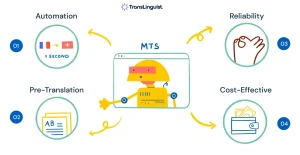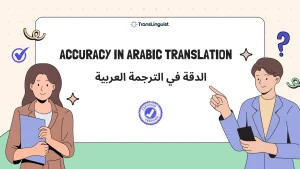Hosting an international conference?
A global product launch?
Or a high-level meeting with stakeholders from five different countries?
Then here’s the truth: Interpretation Services for Events aren’t just helpful.
They’re crucial.
Because no matter how brilliant your content is, if people don’t get it, it doesn’t matter.
At TransLinguist, we’ve supported hundreds of events. From hybrid webinars to boardroom negotiations. And one thing’s clear:
Good interpretation doesn’t just translate words.
It keeps the conversation alive.
Why Interpretation Services for Events Matter
Let’s be real.
Over 350 languages are spoken in the U.S. (U.S. Census, 2023). Globally? Thousands.
So, if your event has even a few international attendees, assuming everyone understands one language?
Yeah, that’s risky.
Interpretation Services for Events fix that. They deliver messages in real time—accurately, clearly, without awkward pauses.
And honestly? It’s not just about understanding.
It’s about respect.
When you offer interpretation, you’re saying: “You belong here.”
That kind of signal?
It turns a standard meeting into something meaningful.
What Are Interpretation Services for Events?
They’re real-time spoken translation—live, in the moment.
Not the same as written translation. This is oral, immediate, and high-pressure.
Think: a keynote in English, instantly heard in Arabic, French, or Japanese through headsets.
Or a legal deposition where every sentence is carefully interpreted.
These aren’t just bilingual people.
We’re talking certified pros—trained in nuance, tone, and industry jargon.
In my experience?
A fluent speaker translates sentences.
A pro interpreter translates intent.
Big difference.
Types of Interpretation Services for Events
Not all events need the same setup. Here’s what works where.
Simultaneous Interpretation
Interpreters work in real time—usually from a booth—while the speaker keeps going. Attendees listen via headsets.
- Best for: Large conferences, multilingual summits, hybrid events
- Requires: Booths, transmitters, headsets, solid AV support
- Pros: Fast, efficient, supports multiple languages
- Cons: Higher cost, needs planning
We used this at a fintech summit in Dubai—English, Arabic, Mandarin.
Flawless. Felt like the future… because it was.
Consecutive Interpretation
Speaker pauses. Interpreter delivers. Then it continues.
- Best for: Small meetings, negotiations, legal talks
- Pros: No tech needed, feels personal
- Cons: Slower—can double the time
Great for depth. Terrible for pacing.
Whispered Interpretation (Chuchotage)
The interpreter sits next to 1–3 people and whispers the translation live.
- Best for: VIPs, last-minute needs
- Pros: Immediate, low setup
- Cons: Only for small groups, can be distracting
It’s like having a secret translator.
(Just don’t use it during a silent meditation session.)
Remote Interpretation
Done online—interpreters join virtually, delivering translation through secure platforms.
- Best for: Virtual or hybrid events, global webinars
- Pros: Scalable, flexible, often 20–30% cheaper than on-site
- Cons: Needs strong internet and good audio
Post-pandemic, this isn’t a trend.
It’s the new standard.
How to Choose the Right Interpretation Service
You wouldn’t hire a chef to fix your car.
So why pick an interpreter without checking their background?
Assess Your Event Requirements
- How many languages do you need?
- Is it live, virtual, or hybrid?
- What’s the audience size?
These answers shape your approach.
Verify Interpreter Credentials
Go for certified pros—especially if it’s legal, medical, or corporate.
They should know the lingo. Not just “hello” and “thank you.”
I mean terms like “EBITDA” or “patient consent protocols.”
Actually, let me rephrase:
They need to sound like they belong in the room.
Provide Preparation Materials
Share scripts, slides, bios—anything that gives context.
Interpreters aren’t mind readers.
And last-minute prep?
Leads to mistakes. You know?
Schedule Regular Breaks
Every 20–30 minutes, interpreters need a 10-minute break.
Mental fatigue is real. I once saw a 4-hour session with no breaks—quality dropped hard.
Lesson learned.
Industries That Rely on Interpretation Services for Events
Just about every sector uses these services. But some depend on them more than others.
- Corporate: Global meetings, investor calls, product launches
- Healthcare: Medical conferences, patient briefings
- Legal: Depositions, hearings, arbitration
- Government: Diplomatic talks, public forums
- Education: Academic events, international orientations
- Nonprofits: Outreach, donor events, crisis comms
A 2023 Pew Research study found that 68% of multinational companies use professional interpretation for over half their global events.
Not surprising. When stakes are high, clarity is non-negotiable.
Best Practices for a Successful Interpretation Setup
Want to avoid tech fails or miscommunication?
- Use high-quality audio—bad sound = bad interpretation. Period.
- Brief speakers: ask them to speak clearly, avoid slang, and pause between points.
- Do a full rehearsal. Test everything.
- Have backups: extra devices, internet redundancy, and alternate interpreters.
Preparation is the difference between smooth and scrambled.
Final Thoughts
Interpretation Services for Events aren’t an extra.
They’re the backbone of global communication.
If you want inclusion, accuracy, and impact—plan ahead.
Go professional.
At TransLinguist, we’ve got certified interpreters in 100+ languages. On-site, remote, or hybrid—we’ve got you covered.
FAQs
How far in advance should I book interpretation services?
At least 4–6 weeks. For rare languages or large events, 8–12 weeks is safer.
Can one interpreter handle multiple languages?
Rarely. Most are fluent in two—usually their native language plus one other. For more languages, you’ll need multiple interpreters.
Is remote interpretation as effective as on-site?
Often, yes—especially with good tech. But for high-security or highly interactive events, on-site is still preferred.
How much does event interpretation cost?
Varies. Simultaneous can be $150–$300/hour per interpreter. Remote is usually 20–30% cheaper. Get quotes based on your needs.
Do I need a certification for legal or medical events?
Yes. Many jurisdictions require certified medical or court interpreters for official proceedings.
Can AI replace human interpreters?
Not yet. AI tools struggle with nuance, accents, and real-time accuracy. Human interpreters are still the gold standard.



